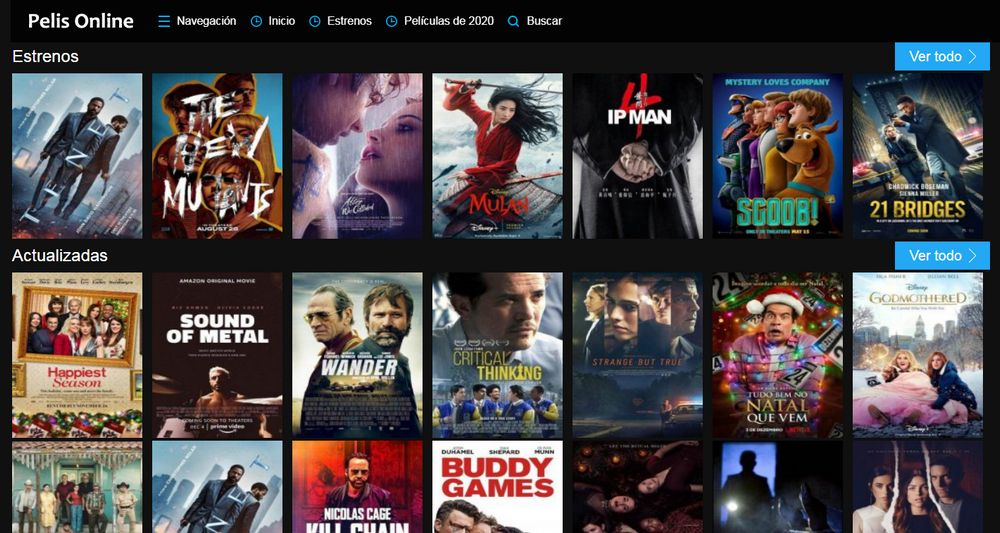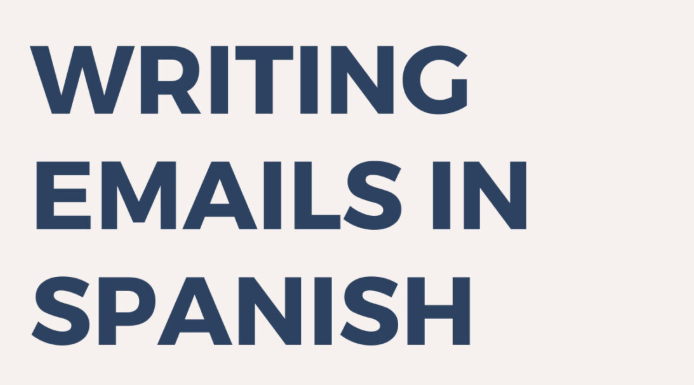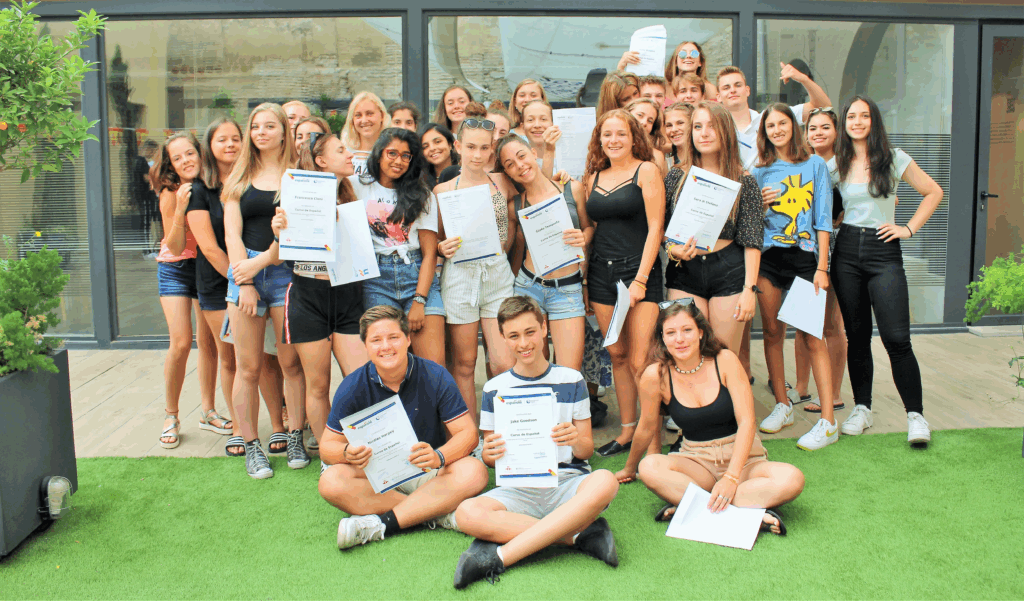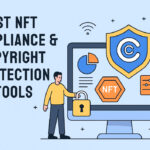In this article, I will talk about the Best Ways to Learn Spanish that are useful, efficient, and easy for beginners.
Regardless of whether it’s for work, travel, or self-improvement, these options will enable you to learn Spanish more proficiently.
Learn the best approaches to achieve step-by-step fluency starting from thorough immersion and grammar learning to entertaining aids like songs and films.
Key Point & Best Ways to Learn Spanish List
| Method | Key Point |
|---|---|
| Immerse Yourself Daily | Surround yourself with Spanish through daily activities and habits. |
| Watch Spanish TV & Movies | Learn vocabulary and pronunciation naturally by watching native content. |
| Listen to Spanish Music & Read Lyrics | Boost listening skills and learn slang through songs and their lyrics. |
| Practice Speaking from Day One | Start speaking early to build confidence and fluency faster. |
| Join Language Exchange Communities | Connect with native speakers to practice real conversations. |
| Write a Journal or Emails in Spanish | Improve writing skills and vocabulary retention by daily writing. |
| Study Spanish Grammar Basics Early | Build a strong foundation by mastering core grammar rules. |
| Watch Spanish YouTube Channels | Learn informally from native content creators on topics you enjoy. |
| Attend Spanish Classes or Summer Schools | Get structured guidance and feedback from professional instructors. |
1.Immerse Yourself Daily
Daily immersion in Spanish is one of the most effective ways to learn the language, as it helps your brain to think and respond like a native. Incorporating Spanish into your daily life—through household item labels, thinking in Spanish, or setting your phone to Spanish—creates habitual exposure which enhances unconscious recall.

This approach is effective in reinforcing skills while reducing the desire to make flawless attempts, guiding learners toward a more intuitive, efficient, and deeply engaging experience.
Immerse Yourself Daily Features
- Fluency through Language Environment Exposure: Being around Spanish regularly facilitates effortless fluency.
- Think in Spanish: Attempt translating your thoughts into Spanish as much as possible.
- Label Objects: Placing sticky notes on daily items in Spanish reinforces vocabulary and aids memory retention.
2.Watch Spanish TV & Movies
Watching Spanish-language television and films is arguably one of the most effective ways to learn the language as they fuse leisure with authentic language immersion. Spanish textbooks do not equip you with the needed cultural context, natural speech rhythm, colloquial expressions, and even non-verbal communication.

Listening to conversations between native speakers enables you to sharpen your Spanish listening skills and acquire commonly used expressions. Beginners can rely on subtitles, while advanced learners are captivated by the rich, fast-paced dialogue that often occurs in everyday interactions.
Watch Spanish TV & Movies Features
- Learning Through Context: Context is essential for learning both words and phrases.
- Pronunciation Benefits: Exposure to native accents improves your own speech.
- Subtitles Aid: English subtitles help grasp Spanish movies and shows, while Spanish subtitles further enhance understanding.
3.Listen to Spanish Music & Read Lyrics
Listening to Spanish songs and reading their lyrics is an impactful and fun way to learn Spanish as it intertwines language with rhythm, emotion, and memory. Music aids in mastering pronunciation, vocabulary, and sentence structuring in a way that is easy and unforgettable.

It helps toread through lyrics since it reinforces things heard, and one gets to appreciate context and idioms. Moreover, regional accents and culturally themed content provide a richer learning experience which is more personally tailored and interesting than traditional approaches.
Listen to Spanish Music & Read Lyrics Features
- Listening Skills Mastery: Repetitive listening sharpens your ability to hear Spanish sounds.
- Culturally Connected: Learn the culture behind the language through songs and appreciate it more.
- Building Vocabulary: Modern and colloquial language is often used in song lyrics.
4.Practice Speaking from Day One
Starting to speak from the first day is one of the most effective ways to learn Spanish as it increases confidence and fluency simultaneously. Early speaking practice requires you to use what you know, transforming latent knowledge into communication.

It helps you conquer shyness, shapes your pronunciation, and improves recall in real interactions. Even with a small vocabulary, constructing sentences helps with learning to speak in real life, and enhances grammar and natural phrases. This use of grammar makes one’s progress more useful and ready for day to day chats.
Practice Speaking from Day One Features
- Paves Way to Successful Speaking: Speaking from the start helps build confidence as there will be less fear of failure.
- Muscle Memory: Regular speaking trains the mouth and tongue muscle.
- Feedback Opportunity: Speaking allows for feedback, corrections and adjustments enhancing improvement.
5.Join Language Exchange Communities
Becoming part of a language exchange community for learning Spanish is greatly beneficial as you connect with native speakers for genuine dialogues. These communities offer balanced, reciprocal partnerships that encourage learning and teaching, so you are able to engage in authentic conversations during your exchanges and learn relevant cultural details.

Unlike lessons, which can be strictly formal and structured, exchanges tend to be free-flowing which helps you get used to all kinds of pronunciations and idioms. This regular interaction solidifies your conversational skills while fostering social bonds, shared objectives, and motivation.
Join Language Exchange Communities Features
- Native Interaction: Engaging with natives through applications and face-to-face gatherings is beneficial.
- Mutual Benefit: Language exchange through teaching and learning is ideal.
- Cultural Insight: Get real-life explanations for phrases and slang from natives.
6.Write a Journal or Emails in Spanish
Journaling or emailing in Spanish is an effective method of language acquisition because it turns passive vocabulary into active usage. It compels you to think, plan your ideas in Spanish, and use grammar meaningfully.

This practice develops one’s sentence structure, spelling, and fluency over time. Unlike talking, which is often done in a hasty manner, writing gives the opportunity to think through each stage, self-correct, and improve upon what is presented, thus increasing a person’s accuracy in elusive expression and building confidence in progressively sophisticated ideas in Spanish.
Write a Journal or Emails in Spanish Features
- Grammar Reinforcement: Enforcing specific grammar during writing solidifies understanding.
- Vocabulary Usage: New terms can be conveniently integrated into phrases.
- Tracks Progress: Reflection of earlier entries provides insights on growth.
7.Study Spanish Grammar Basics Early
Learning the Spanish language basics methods of early grammar learning is one the most effective ways to learn Spanish as a second language as it lays a path with order on which you can build all subsequent skills.

Knowing the most basic rules aids in avoiding complications for the most basic rules such as verb conjugations, gender, and sentence structures thus ensuring a much quicker ability to form sentences. Studying early Spanish grammar aids in pattern recognition during listening and reading further improving the efficiency of learning as well as aiding in speaking and writing by boosting confidence with controlled tools to express.
Study Spanish Grammar Basics Early Features
- Strong Foundation: Good communicators are built from proper grammatical understanding.
- Reduces Errors: Corrective measures to common mistakes are dealt with proactively.
- Enhances Comprehension:** Reading or listening to Spanish becomes easier with knowledge of its sentence structures.
8.Watch Spanish YouTube Channels
Following Spanish-speaking YouTube channels is one of the best ways to learn the Spanish language since it gives you flexible access to real-life contexts. From tutorials to travel logs, these videos teach you the everyday spanish and the informal language that one uses in day to day dealings.

Learning is more effective when you can control the pace. You have the option to pause, rewind, or speed up content. This broadens the scopes of learning making it more engaging, maintaining your motivation through enjoyable subjects while sharpening listening skills and building vocabulary simultaneously.
Watch Spanish YouTube Channels Features
- Free Resource: Spanish tutorials, vlogs, and other content are available in excess.
- Various Accents: Exposure to different regions broadens your listening skills.
- Visual Learning: Learning accompanied with visuals aids in better information retention.
9.Attend Spanish Classes or Summer Schools
Going to classes or enrolling in summer schools is one of the most effective ways to learn Spanish since it offers professional help and constant evaluation. These environments make sure you get the textbook materials in a systematic manner ranging from grammar and vocabulary to actual speaking practice.

Another notable benefit is group immersion, which not only helps deepen understanding but also allows interaction with fellow learners. The combination of classes and informal communication due to the sociable atmosphere enhances progress and helps students develop a strong language foundation.
Attend Spanish Classes or Summer Schools Features
- Structured Learning: Well-planned lessons promote organized mastery of the language.
- Qualified Instructors: Personalized feedback and guidance is available.
- Motivating Environment: Gain motivation through interaction with other learners.
Conclusion
To summarize, the Spanish language can be best mastered through a combination of daily practice, speaking engagements, cultural interactions, and formal lessons. Active engagement, be it through consuming Spanish media, journaling, or conversing with native speakers, achieves great outcomes when done consistently.
All the skills and approaches complement one another, allowing seamless acquisition of vocabulary, grammar, and self-assurance. Blending entertaining hands-on application with fundamental theory fosters continuous motivation alongside balanced fluency development.
FAQ
How long does it take to become fluent in Spanish?
It depends on your study method and consistency. With daily practice, many learners reach conversational fluency in 6–12 months.
Can I learn Spanish without taking formal classes?
Yes. Many people learn through immersion, apps, YouTube, and language exchanges. However, formal classes help with grammar and structure.
Is it important to speak from day one?
Absolutely. Speaking early helps build confidence and makes it easier to recall vocabulary and sentence patterns in real conversations.









